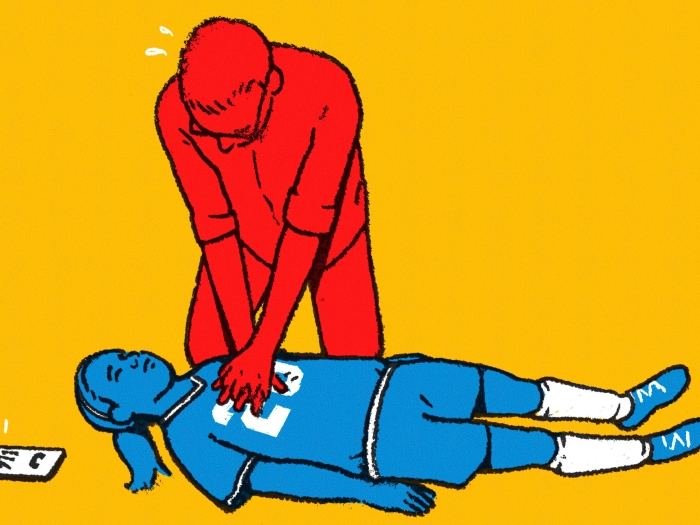Supervised exercise therapy is recommended for some people with peripheral artery disease. Now, more patients will have access to the treatment.
7:00 AM
Author |

Nearly 8.5 million people in the United States have peripheral artery disease, or PAD.
As the nation's population ages, that number could reach up to 16 million in those ages 65 and older — and 19 million among all ages — by 2050.
MORE FROM MICHIGAN: Sign up for our weekly newsletter
But there's good news, too: Medicare recently approved coverage of the recommended treatment for some PAD patients, known as supervised exercise therapy.
That means more people will have the opportunity to participate, says Matthew Corriere, M.D., a vascular surgeon with the University of Michigan Frankel Cardiovascular Center.
"A supervised exercise program, available by prescription from your health care provider, can help reduce PAD symptoms and improve your condition," says Corriere.
Why exercise can help
PAD occurs when plaque builds up in the arteries and prevents blood from getting to the muscle and tissue.
Although this plaque buildup can occur in arteries throughout the body, it is most commonly found in the lower extremities, typically in the muscle and tissue of the calf.
SEE ALSO: Leg Pain and PAD: Know the Symptoms and Risk Factors
A primary symptom of PAD is known as claudication — defined as fatigue, discomfort, cramping or pain in leg muscles when walking or exercising.
Claudication can also occur in the buttocks, thighs or calves. It typically resolves with rest.
Many PAD patients who have claudication are successfully treated with medication or a supervised exercise program, which consists of graduated exercise with the help of an exercise physiologist. That person can help a PAD patient determine how much time he or she should spend on the treadmill, for example, and the level of difficulty.
Small steps, big gains
According to trials conducted by the Centers for Medicare & Medicaid Services, supervised exercise therapy reduces mortality rates and cardiovascular risk factors. It also increases exercise capacity and quality of life in older adults.
Getting more physical activity is one of several simple lifestyle changes that the American Heart Association recommends for PAD patients.
Walking is one of the most successful types of exercise, Corriere says.
Among the benefits are:
-
Ability over time to walk for longer stretches before needing to rest
-
Reduced leg pain
-
Improved muscle strength
-
Reduced risk of heart attack or stroke
-
Weight loss
Under the new Medicare policy, beneficiaries are required to visit a doctor to receive a referral for supervised exercise therapy. Medicare will provide coverage for up to 36 sessions (at 30 to 60 minutes each) for 12 weeks.
To make an appointment to discuss your need for a PAD treatment plan, call 888-287-1082 or email [email protected].


Explore a variety of healthcare news & stories by visiting the Health Lab home page for more articles.

Department of Communication at Michigan Medicine
Want top health & research news weekly? Sign up for Health Lab’s newsletters today!





